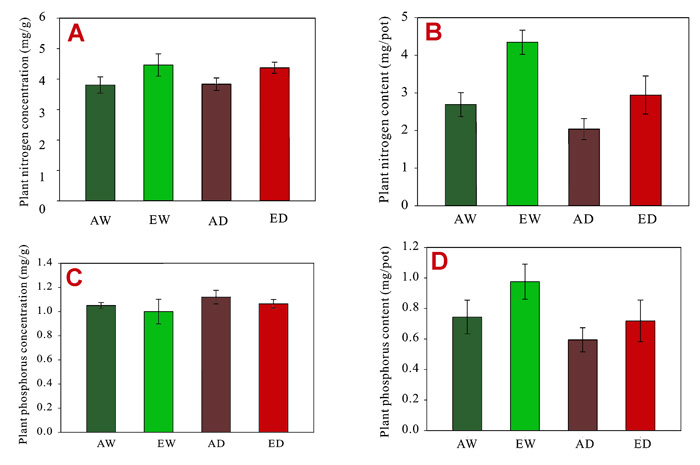| Follow @co2science |
Paper Reviewed
Xiao, L., Liu, G. and Xue, S. 2016. Elevated CO2 concentration and drought stress exert opposite effects on plant biomass, nitrogen, and phosphorus allocation in Bothriochloa ischaemum. Journal of Plant Growth and Regulation 35: 1088-1097.
According to Xiao et al. (2016), the response of perennial grasses to both elevated CO2 and water stress "is not well understood." Hence, they say that "more research is required to investigate the partitioning of biomass and the content and allocation of nutrients under the interaction of drought stress and elevated CO2," which is exactly what the three Chinese researchers set out to do, as reported in their recent paper published in the Journal of Plant Growth and Regulation.
Focusing on a perennial herbaceous grass species found in the hills and gully regions of the Loess Plateau in China, Xiao et al. grew Kings Ranch bluestem (Bothriochloa ischaemum) in controlled environment chambers for a period of 105 days under two different CO2 concentrations (400 or 800 ppm) and two different water treatments (well-watered maintained at 60% field capacity or drought maintained at 40% field capacity). At the end of the experiment they measured changes in plant biomass and nitrogen and phosphorus contents and concentrations.
Results of the experiment revealed a CO2-induced enhancement of root, shoot and total plant biomass of 75, 18 and 36 percent under well-watered conditions and 31, 25 and 27 percent under drought conditions, respectively (see Table 1). In addition, Xiao et al. report that increased biomass allocation into the plant roots by elevated CO2 "significantly increased the uptake of nitrogen and phosphorus, increasing whole-plant, shoot, and root nitrogen and phosphorus concentration and thus increasing the nitrogen and phosphorus contents" (see figure below).


Figure 1. Whole-plant nitrogen concentration (Panel A) and content (Panel B) and whole-plant phosphorus concentration (Panel C) and content (Panel D) in Kings Ranch bluestem after 105 days of CO2 enrichment. AW = ambient CO2 and well-watered, EW = elevated CO2 and well-watered, AD = ambient CO2 and drought, ED = elevated CO2 and drought. Adapted from Xiao et al. (2016).




